Synthetics -
Synthetic tests are nice for many reasons; they offer an easy to use repeatable standard for testing. Most are readily available for free on the internet and can be used by anyone. But unfortunately they rarely tell the full story. Still they are an important part of the story and need to be included in any testing. Our typical synthetic tests are Futuremark’ s 3DMark Vantage, Furmark, Stalker Call of Pripyat, Direct Compute, and Unigine’s Heaven benchmark for both DX10 and DX11. With these three tests we can give you a good idea of base performance of the GPU in question.
3DMark Vantage -
3DMark Vantage is one of the benchmarks that everyone knows. It is used commonly for bragging rights. If you have the highest score, you win. The suite of tests covers the gamut of DX9, DX10, AI and Physics processing that you would normally see in gaming. We will run both the performance test as well as pushing the cards to complete the Extreme test run as well.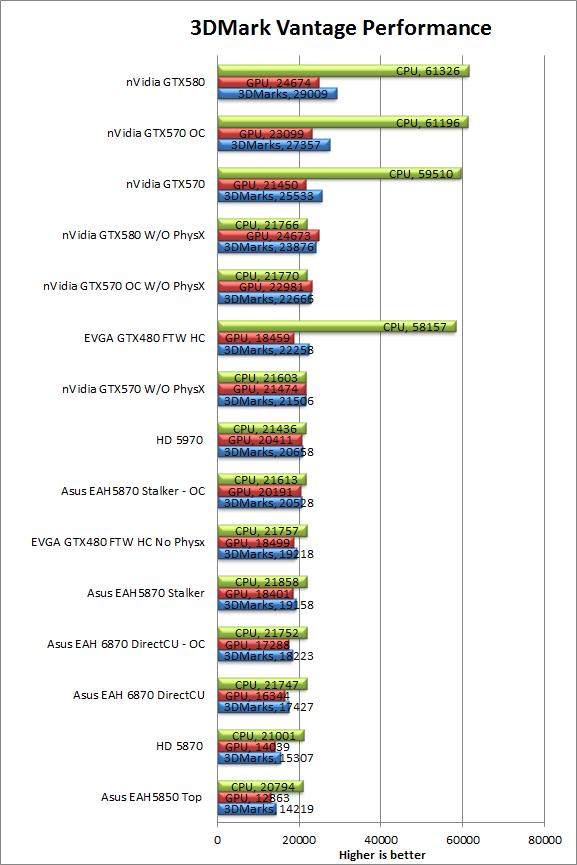
According to everything we have been reading the 6870 is meant to fall in between the 5850 and the 5870. From the numbers we see here that is exactly where it lands for both the Performance run and the Extreme run. Unfortunately the overclocking puts it in the same range as well, but then again we were not able to get that much of an overclock out of our board.
3DMark 11 -
The new benchmark from Futuremark, 3DMark11 takes off where Vantage stops. Here you get Tessellation, Direct Compute Physics and much more. We will be transitioning to this new benchmark now that it is officially out and on the market. 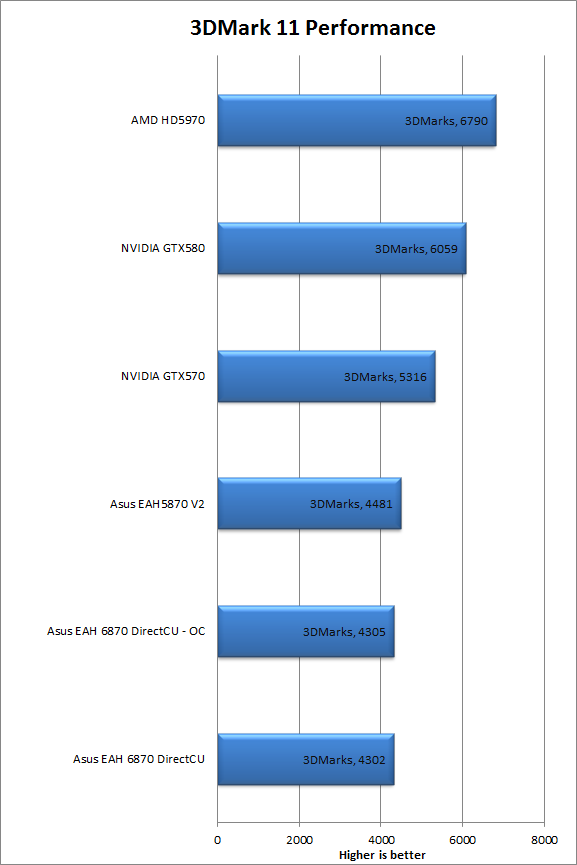
3DMark 11 shows us similar performance metrics to what we saw with 3DMark Vantage. We have not put some of the nVidia 4 series GPUs or all of the 58xx GPUs we have into this chart yet but we would expect that the number will fall much like they do with 3DMark Vantage despite the lack of GPU based Physics.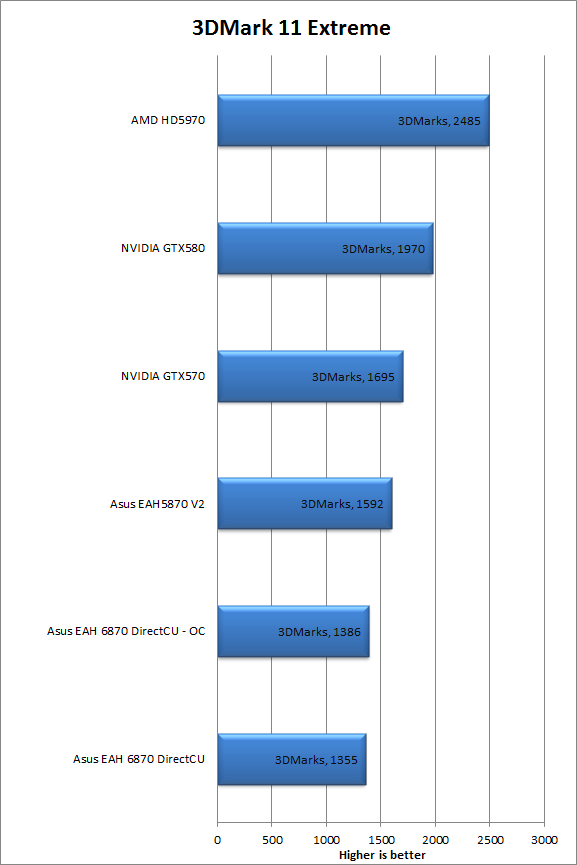
Unigine Heaven (DX 10 and DX11) -
Unigine’s Heaven bench was one of the first tests that offered a good measure of DX11 performance. Although we now have DX11 cards from both AMD and nVidia we are still going to maintain the DX10 runs just to see how these GPUs handle the more bulky DX10 Code.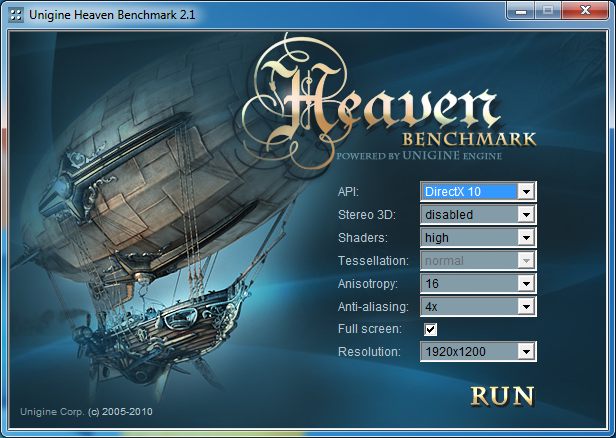
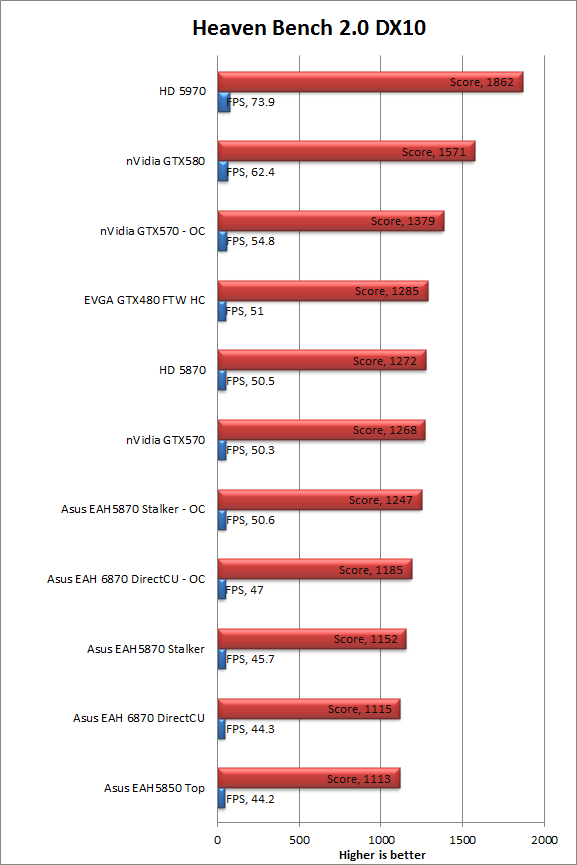
For the DX10 run of Heaven 2.0 we find the EAH 6870 coming in a hair above the EAH5850 from Asus. This is about what we expected from this GPU based on its design and the way it is being marketed. 
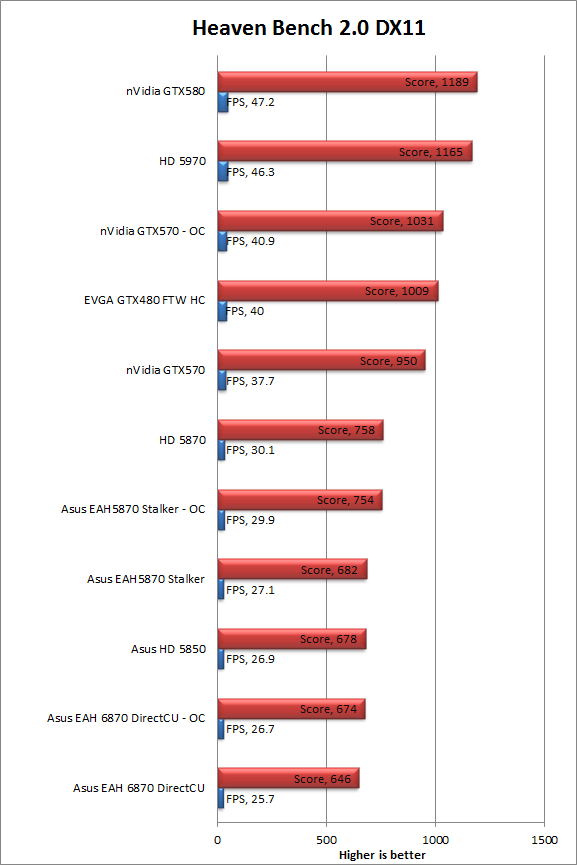
For DX11 the EAH6870 falls all the way to the bottom of the list by almost 30 points. This was unexpected and to be honest we are not entirely sure why the performance numbers turned out the way they did.
Stalker Call Of Pripyat Bench (DX10 and DX11) -
The Stalker Call of Pripyat test uses the stalker rendering engine and images. It is capable of emulating the most common effects from DX11 and DX10 in a run of different scenes. We ran our GPUs through both and have recorded the average frame rate below. We sorted this bench by the ‘SunShafts’ test as it appeared to be the toughest on the GPUs in question. 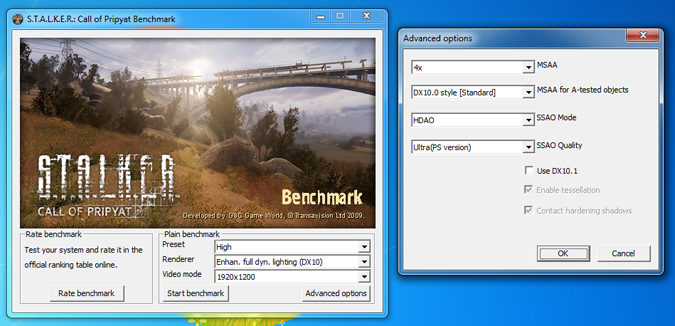
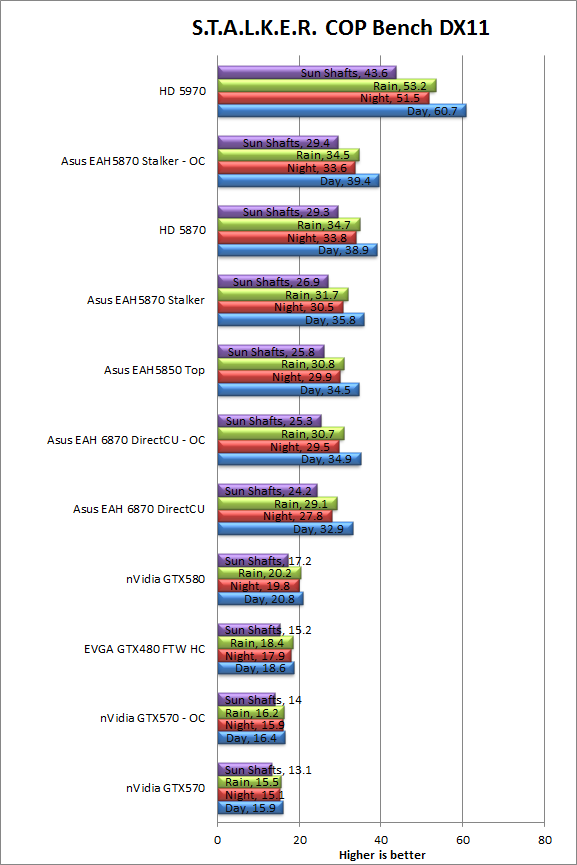
For Stalker the bench the 6870 shows up well in the middle of the pack especially for DX10. However it is important to note that most of the nVidia cards we have tested do not perform well on this test in DX10 mode so the numbers here are somewhat misleading. Interestingly the 6870 falls inline just behind the 5850 when it is supposed to be ahead of it; at least according to the marketing. 
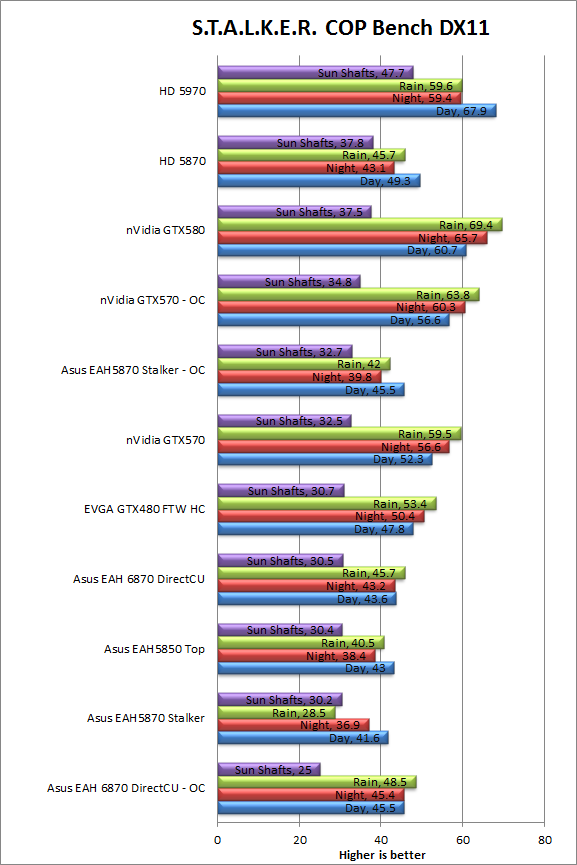
The DX11 tests appear to me more accurate, but unfortunately the 6870 ends up at the bottom of the list here.
Synthetics Recapped -
The synthetic tests are leaving us a little uncertain about the EAH6870 DirectCU. We honestly expected this product to come in a little higher than it did; both for stock and overclocked numbers. Still synthetics are never the whole story so with that in mind lets head on into the real world testing and see what we can see.




